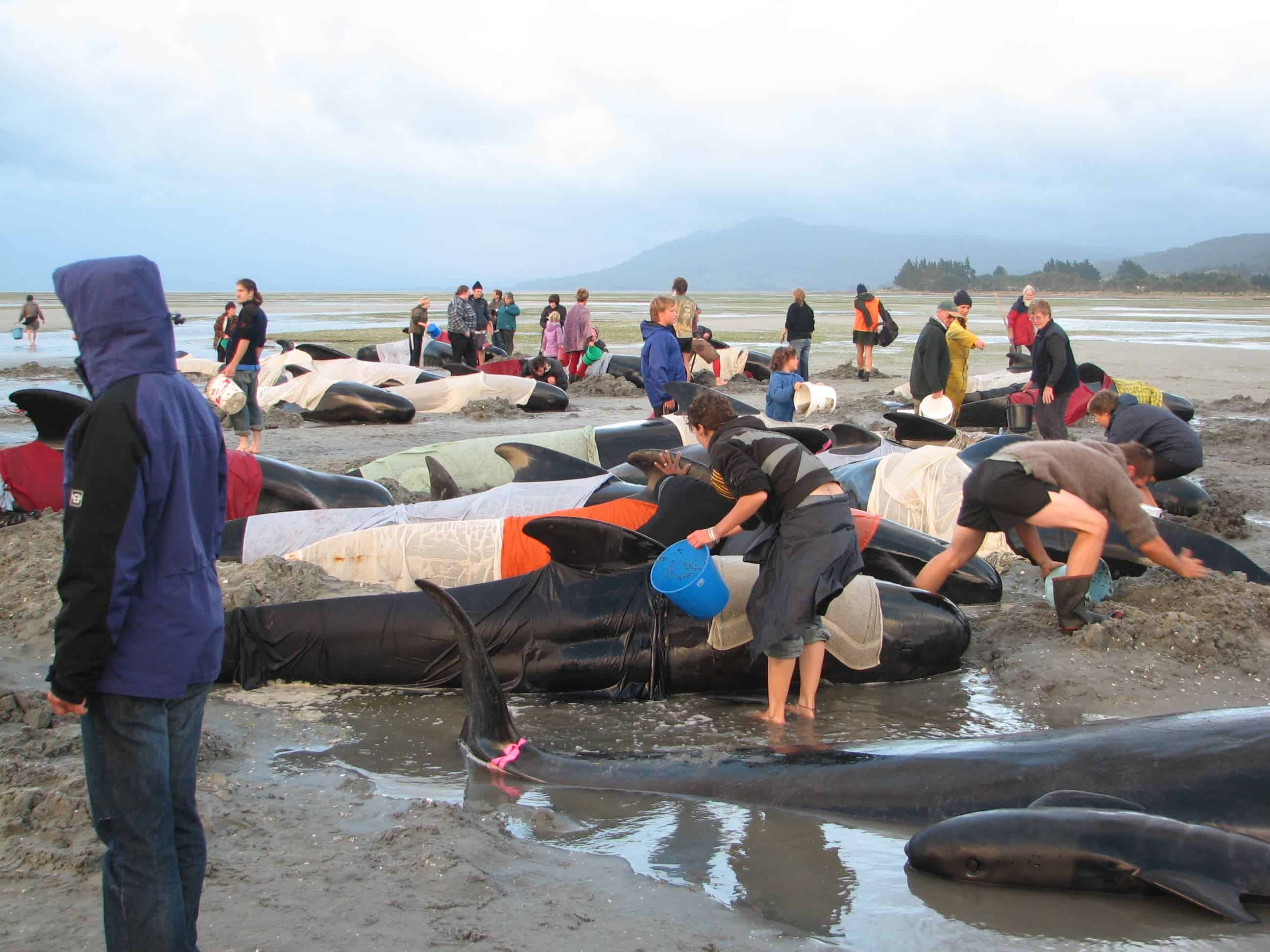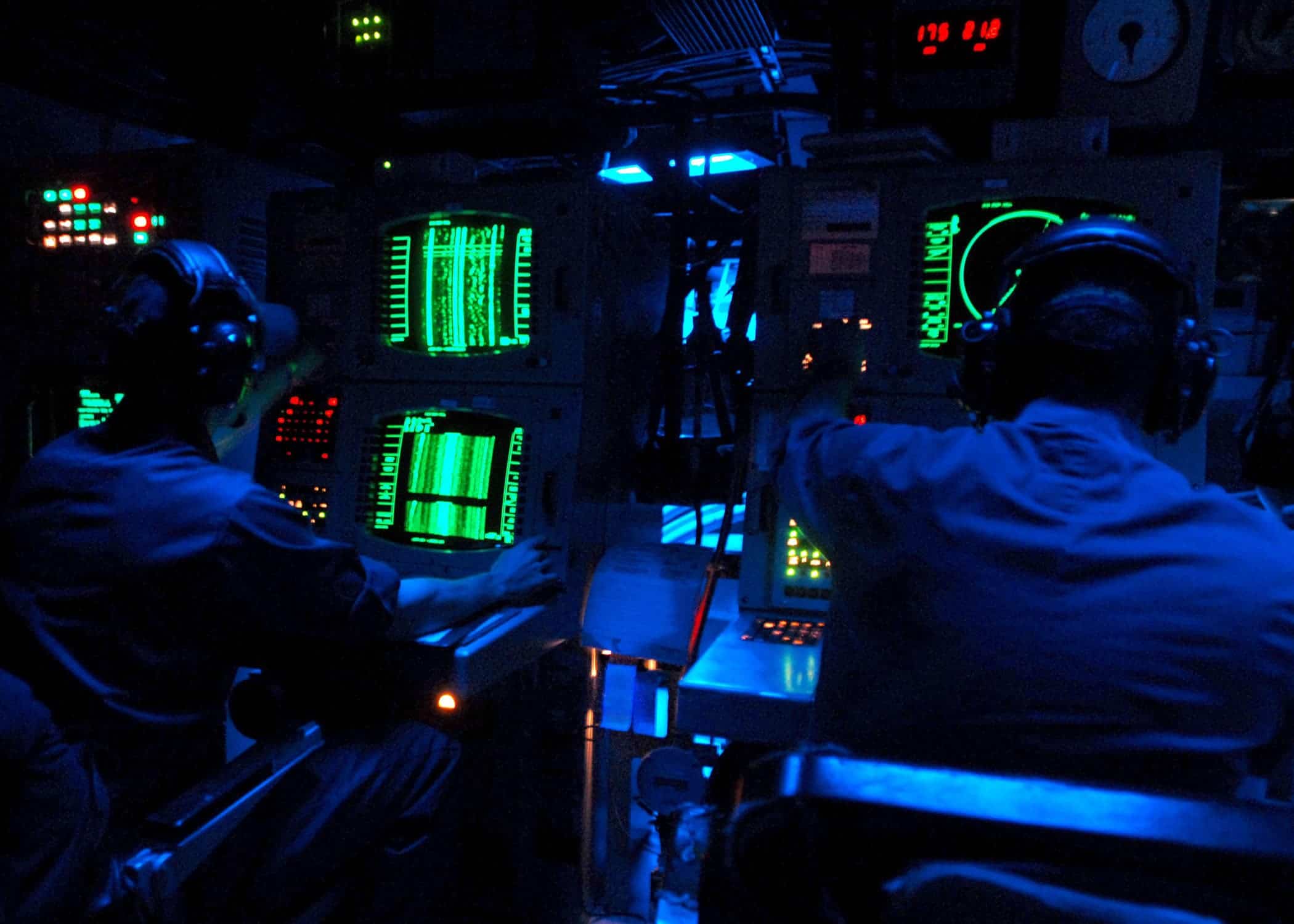Last week 416 pilot whales were stranded in Golden Bay in New Zealand. The next day 240 more stranded themselves. The only larger whale stranding recorded in New Zealand was in 1918 on the Chatham Islands, with a whopping 1000 pilot whales stranded. These strandings are a problem, because most of the whales die. This is due to dehydration, being unable to support their own weight out of the water, or drowning if water from high tide covers their blowholes. From the beaching last week, only a few dozen were successfully returned to the sea. Unfortunately, strandings are not uncommon; up to 2000 animals are beached each year. Mass strandings are a bit more unusual and often get media attention when they occur.

These occurrences raise a big question:
How is it that hundreds of whales end up stuck on the shore at the same time?
There are multiple reasons and theories for why whales become stranded. It is not fully understood because it is unknown what happened before the whale was stranded. Most information is garnered from whale “autopsies” after their death on shore. Here is what is known:
Health
Whales are huge animals and when they get washed in shallow water, they get stuck and cannot go back to sea. The whale could have died already at sea and just washed up on shore. If they wash up alive, they may be ill from infections or parasites, injured, old, or have genetic mutations. Because of these factors, they could be weak or disoriented and wind up on shore by chance.
Sonar
Sonar pulses, such as those that the U.S. Navy uses to detect submarines, may startle whales and cause them to seek shallower water. Indeed, a correlation was found between mass strandings of whales and naval sonar activity. The quick pressure changes caused by loud sonar have caused hemorrhaging in cetaceans stranded in the Bahamas in 2000. In 2002, beaked whales that stranded on the Canary Islands suffered from decompression sickness due to sonar; they underwent severe tissue damage from gas-bubble lesions. These cases are likely not isolated and have been the cause of other beachings.

Food
Whale strandings have been connected to water flow patterns. When a cool water current that contains lots of squid and fish flows north, whales swim closer to land to follow them. They may be following the food into to shallower water. Or they could be trying to avoid becoming prey themselves. Some whales have been known to go to shallow water to escape predators such as orcas.
Shallow slopes
Whales’ echolocation system isn’t so good at detecting coastlines that have a gentle slope. The reflections between the surface of the water and the ocean’s bottom may attenuate the sounds so much that the whales cannot hear the echo. They may think that they are in much deeper water. Indeed, Golden Bay (the site of the most recent stranding) has a very shallow shore, with a mass stranding occurring around this time almost every single year.

Social behaviour
It is much more common for a single whale to become stuck on the shore. It can happen for any of the above reasons. However, when a whole pod gets stranded, this is often a different story. The type of whale plays a big role. Toothed whales are beached much more frequently than baleen whales. Toothed whales live in deep water and have large groups with extremely strong social bonds. Sperm whales, pilot whales, dolphins including the false killer whale and some beaked whales are toothed whales that are often stranded.

The leader of the migrating pod may accidentally lead the whole group ashore. Alternatively, if one whale is stranded it lets off a distress signal, and it’s thought that the whole group comes to its aid or for support. The tide recedes and the whole pod is stranded; this is a very common pattern.
Basically, whales can become stranded for a variety of different reasons. Mass strandings are particularly devastating because so many whales die at once. Unfortunately, it seems that their strong social bonds can be the death of them! However, there is still much to learn out theses strandings and their causes.


